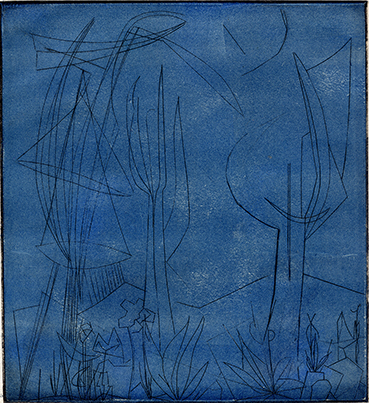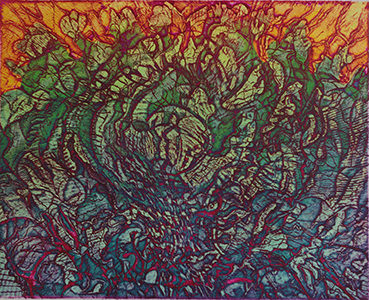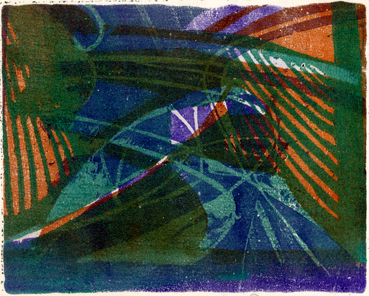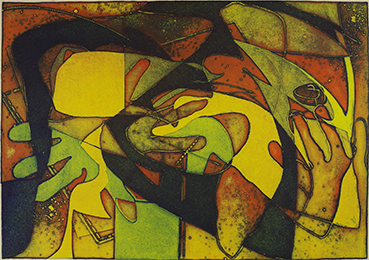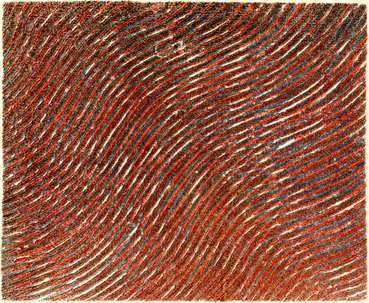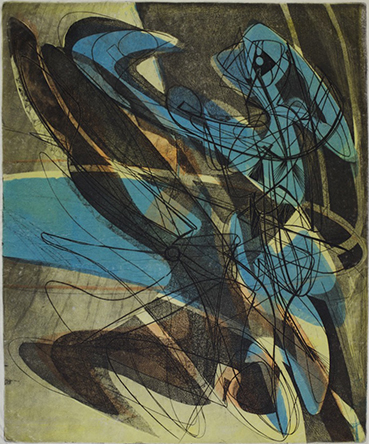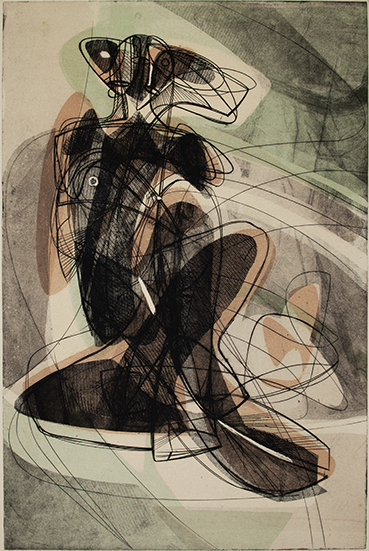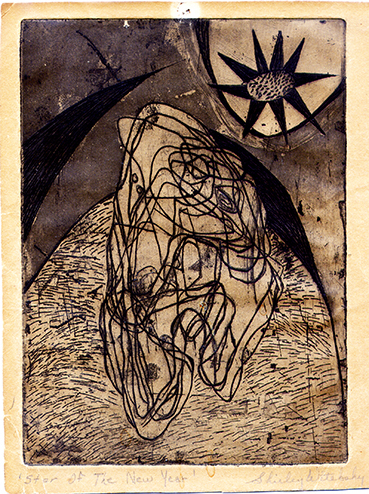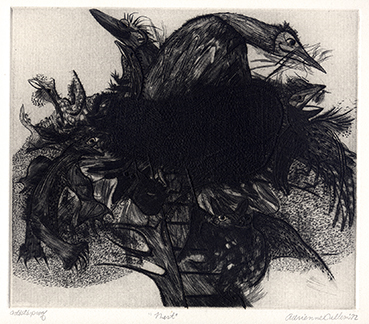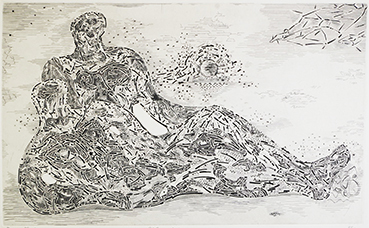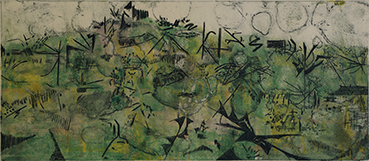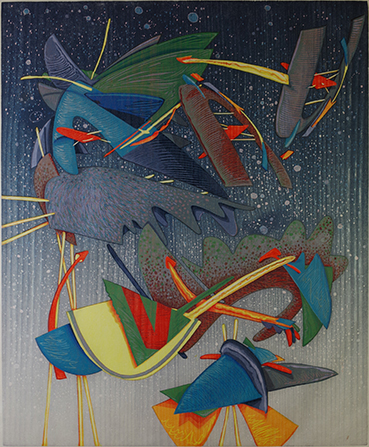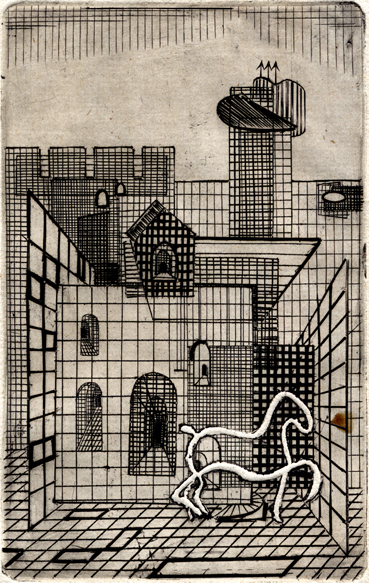

l'atelier de l'amour:
British painter and printmaker Stanley William Hayter began his printmaking career working with the engraved line. His technique was based in Surrealism. He became increasingly influential among European Modernists when he opened his renonwed workshop--Atelier 17--in Paris in 1927. The workshop moved to New York City during the war, but again returned to Paris in 1950. Between Paris and New York, the workshop was filled with some of the greatest names of 20th century art: Miro, Calder, Lipchitz, Picasso, Motherwell, Nevelson, Pollock, Rothko, and de Kooning.
Aside from the innovative techniques that both advanced printmaking in the midcentury and drew hundreds of artists to Atelier 17, one of the--until recently--overlooked aspects of the workshop was the openness that welcomed female artists into the ranks. The collaborative and open sense of the workshop, and the close proximity of the small studio quarters, was bound to be the impetus for romantic involvements.
This proposed exhibition draws on works from the collection of Professor Tyrus Clutter and delves into these relationships. Several artists met and fell in (and sometimes out of) love inside the confines of Atelier 17. The exhibit explores the relationships of these couples, as they met in the studio, but also as they formed friendships among one another and with other studio artists. Interwoven is the influence of the artists on one another and the importance of the print medium and the characteristics of Hayter's teaching method.
The plan for this exhibition is an opening in 2027, the centenary of the founding of Atelier 17. Additional works are being added to the collection still, as well as loans from other collections (in total about 70-80 works will be included). Images shown here, from Tyrus Clutter's collection, are currrently being considered, while others will be borrowed. Included are some photographs of Hayter and Helen Phillips as well as an engraving plate by Phillips. Some Supplemental Images can be seen here.
The bulk of the research for this project took place in the summer of 2023. Plans for additional research are being explored for 2024. You can donate to the travel expenses through this campaign. An article about the project was printed in the Ocala Gazette in June 2023.
This exhibit follows on the heels of an earlier exhibition from Clutter's collection: Greater than 17: The Art and Influence of Stanley William Hayter and Atelier 17. A catalogue for that exhibit can also be viewed in this PDF. The Greater than 17 exhibit opened at the Webber Gallery of the College of Central Florida in the fall of 2021 (see installation shots here) and later at the Leepa-Rattner Museum in early 2022. Professor Clutter is considering venues for both exhibitions. To inquire about hosting either of them and for more details contact tyrus@tyrusclutter.com .
Additonal exhibits include a collection of Christmas and New Year prints, available for 2025 and 2026, and an exhibition of Women of Atelier 17 that will also run in 2027.

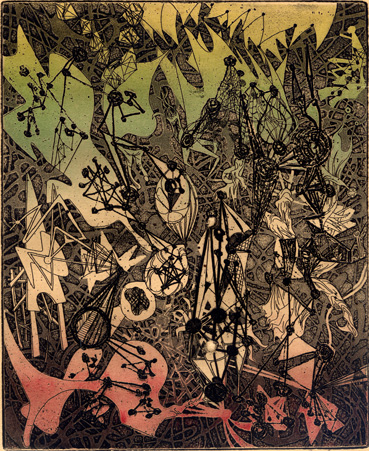

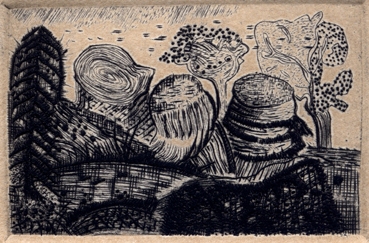
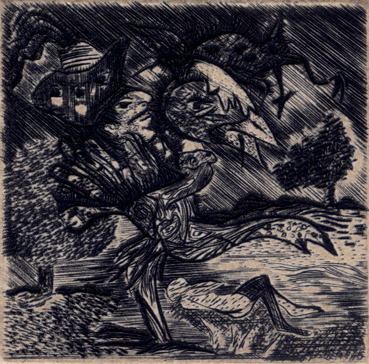
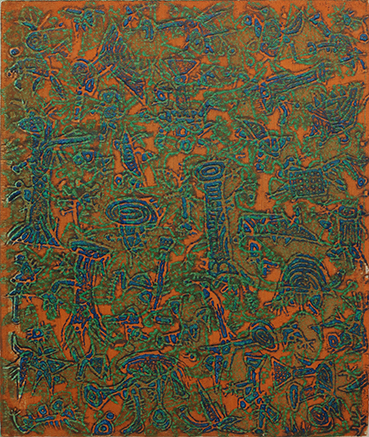
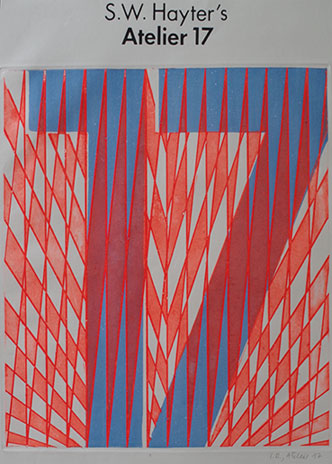




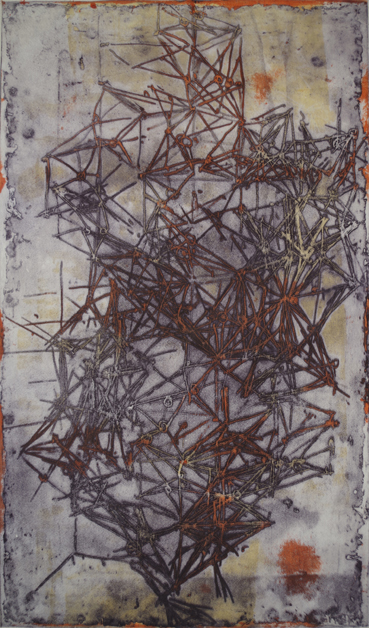

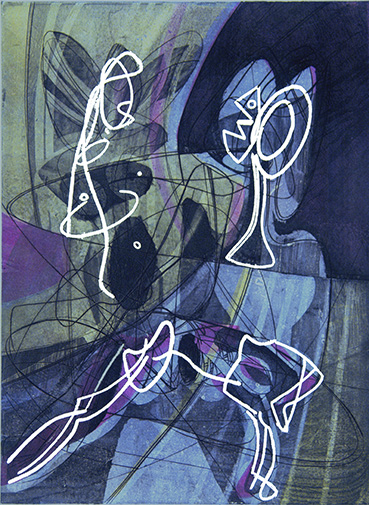
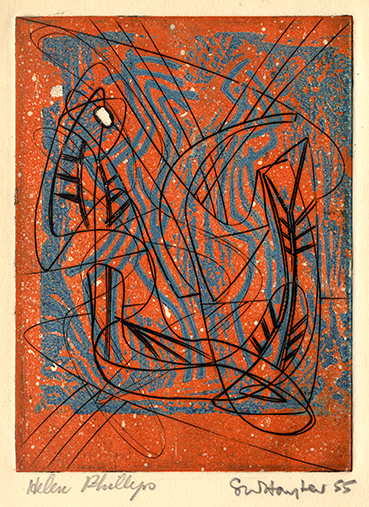


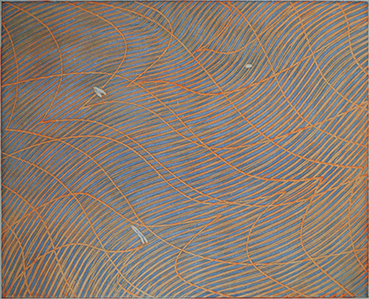


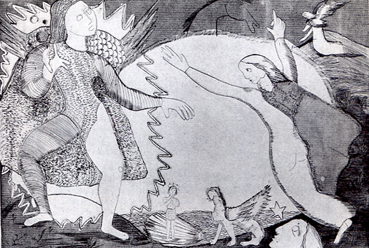
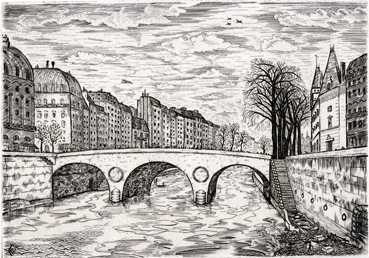

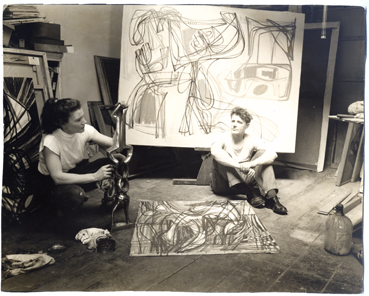
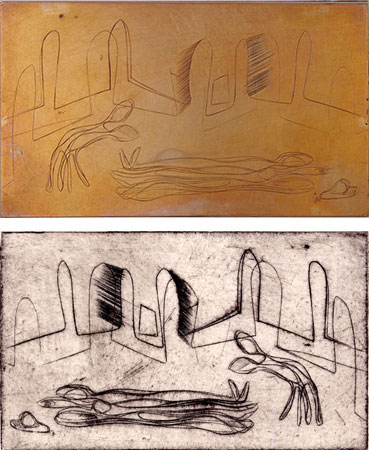
krishna reddy, shirley witebsky, judith blum reddy:
Krishna Reddy is typically regarded as one of the discoverers of the color viscosity printing method for which Atelier 17 is most widely associated. During the 1960s he was Hayter's right hand man in the workshop and actually printed many of Hayter's plates from that period. He met the American, Shirley Witebsky, in Paris and the two were married. They returned to North America for a period, to work on some sculpture projects, when she was diagnosed with cancer from which she ultimately succumbed. Upon Reddy's return to Atelier 17 he met Judith Blum, who was encouraged to study with Reddy from Bob Blackburn, and the two later married and moved to New York where Krishna taught for some years at New York University.




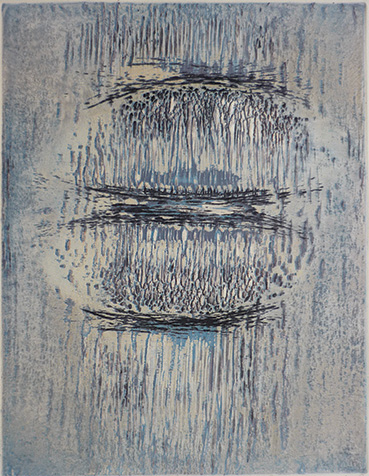

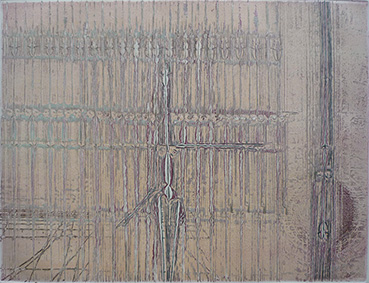


jim monson and isolde baumgart:
Jim Monson worked with Atelier 17 alumnus Mauricio Lasansky at the Univeristy of Iowa before heading to Paris to work with Hayter in 1970. After living out of hotels for a year, Monson heard that a room was opening for rent from another atelier artist. The owner eventually wanted to rent the entire house and Hector Saunier--atelier assistant--suggested his friend Isolde Baumgart as a housemate; she was a German artist and graphic designer who had first worked at the atelier in the 1950s. Soon Jim and Isolde were sharing the house and by 1973 they were married.
fred becker and jean morrison becker:
After studying art at Sarah Lawrence, Jean Morrison spent some time working as an artist and art teacher before heading to Europe during WWII to volunteer for the Red Cross. Upon her return to New York she rented a studio space in a building where several Atelier 17 artists were also resident. On their encouragement she began work at the atelier in 1946. It was there that she met Fred Becker who was in and out of the studio over the next couple years. When he accepted a teaching position at Washington University in St. Louis, the two married and moved there, spending two decades there before ultimately going on to UMass Amherst.
roger vieillard and anita de caro:
Frenchman Roger Vieillard came from a background of diverse interests but dabbled in drawing in the early 1930s. By 1935 he had met Hayter and Joseph Hecht and began studying engraving with them. The following year American Anita de Caro moved to Paris and also began to work at Atelier 17. The two initially met at a party organized by the workshop and were married in 1939.
sergio gonzalez-tornero and adrienne cullom:
A native of the southern US, Adrienne Cullom graduated with an art degree from the Atlanta Art Institute before heading to Europe to continue her studies. This eventually led her to Paris and Atelier 17, in 1961. There she met Chilean-born artist Sergio Gonzalez-Tornero. He had studied broadly before ending up at the atelier. His innovative methods in intaglio printing were mentioned in Hayter's New Ways of Gravure. Sergio and Adrienne married and moved, first, to Atlanta and then to New York, where they also worked at Robert Blackburn's print workshop.
ted appleby and hope manchester:
Hope Manchester and Ted Appleby were American artists with scant biographical information, but clearly connected to Atelier 17. There is evidence that Manchester worked at the atelier in both New York and Paris. Appleby served in the navy during the war, but by 1947 was working as an artist in Mexico. Manchester was in New York around the same time, but the two then moved to Paris in 1949 and then to Alba-la-Romaine in the south of France in 1950. The couple, as well as Bill Hayter and Helen Philips, were among the thirty or so artists who came to the small town of Alba, revitalizing it into an artist enclave.
stanley william hayter, edith fletcher hayter, dalla husband, helen phillips hayter:
Stanley Hayter began his serious study of art when he moved to Paris in 1926. There he met and married American Edith Fletcher and both of them studied engraving with the Polish artist Joseph Hecht. By the next year, Canadian Dalla Husband and her friend had met Hayter and convinced him to teach them the engraving process, which was ultimately the birth of Atelier 17. After his marriage to Edith ended in 1929, Hayter and Husband had an ongoing professional and romantic relationship for several years.That ended around the time that American sculptor Helen Phillips came to study at the atelier in1936. Hayter and Phillips married in 1940, the same year the atelier moved to New York. This was Hayter's longest relationship, ending in their 1973 divorce.

